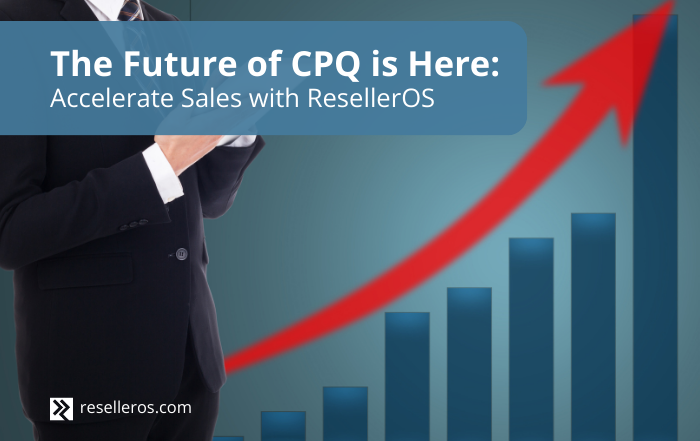The Modern Sales Team – Five Essential Qualities for Success
We’ve written before about the way that CRM and digital marketing have changed sales. Customers increasingly find businesses through online channels, conduct research on their own, and by the time they’re through the funnel, they may not have talked with a single person from your company.
But sales is far from dead: it’s only transformed. Brands still need ambassadors, cold calling still works, and – in B2B especially – face-to-face contact still makes a difference. Marketers spend a lot of time finding leads; you need a sales team to close them.
In this article, we’ll discuss five important qualities that a modern sales team uses to navigate the 21st century.
Data Driven Thinking
For years, the most important metric for gauging a salesperson’s success was “revenue,” and that’s it. Revenue is still the bottom line to most sales managers, and while that isn’t likely to change, there are much better ways to prepare a team for success in the digital age.
The biggest asset a modern sales team has is data:
- Almost every CRM tracks leads from the moment they are identified to the moment they are closed
- Social sellers have detailed statistics on the number of leads they’ve shared content with, what was popular, and what wasn’t
- Data around conversation frequency, emails, meeting length and calls are usually good indicators at gauging a prospect’s interest
Blind hustling is a waste of time when such a wealth of information is available. By relying only on revenue as a measure of success, you may be missing critical insights for improving your sales pipeline. Identifying patterns from the most successful salespeople and combining them with data can lead to breakthrough thinking and innovation. Identify, refine and repeat!
Responsivity
One good way to ruin a sales career is not responding to leads – that’s obvious. It’s less obvious that a sales team can start “responding” before contact is ever initiated. By the time a conversation occurs, a lead has generally done their homework: they know what they want, and they know what questions they want to ask.
A modern salesperson should have a good idea what those questions will be and how to steer the relationship before it starts. How? Once again, the answer is “data”.
With a good lead generation platform, web and social analytics, marketers know a lot about their leads before ever forwarding them to sales. This information can tell them:
- What channel a lead came from
- What they were looking for
- What they were researching and reading
- Detailed demographics, income range, organization size, etc.
When prospecting in their own network, salespeople even have access to CVs, Resumes, real-time social updates and blogs. Today, it doesn’t take much effort to learn about a prospect in advance – it’s ten or fifteen minutes well spent.
Collaborative Teamwork
Some problems never go away. Today, marketers still disagree with sales teams about what constitutes a “qualified” lead and what doesn’t. But that’s not the only reason teams in a modern organization need to be more collaborative: sales is no longer the default “face” of a company to its clients. There are numerous entry points for a prospect:
- Lead forms (Marketing)
- Email & Phone (Customer Service)
- Private Message (Social Media Management)
- App download (IT)
- Networking events (Management)
While some of these have always held true, the major difference today is that Marketing and Sales are more ambiguous than they have ever been. Marketers sometimes sell things, and salespeople sometimes market them.
There are plenty of actions a modern organization can take to hurt its bottom line. One of them is siloing off information that could be relevant to others. For this reason, having conversations is important. Teams should stay in communication, collaborate on goals and funnels, share KPIs and – most importantly – data on prospects/leads.
Emphasis on Experience
We’ve talked before about the difference between a value proposition and Customer Experience (CX). In today’s competitive, information-fueled marketplace, no company is just selling a product or service: they are also selling a journey that begins the very moment they encounter a brand.
Salesforce goes so far as to say that nowadays, CX is the “Top Sales Benchmark””. And according to statistics, the top 20% of sales teams in terms of performance reported an active emphasis on CX 12-18 months prior to being surveyed.
But how does that translate into action? In the larger scope of things, good CX is a goal that integrates every stage of a marketing funnel. For sales, it boils down to one main factor: personalization. More specifically,
- Customers prefer salespeople who they consider trustworthy contacts. This means low pushiness and high sensitivity to a prospect’s needs.
- Information gathered during the prospecting and lead-assessment phase translates into knowledge that should be used to approach each case differently.
- Short, personal follow-ups by whatever means a prospect prefers engages attention and shows commitment to a professional relationship.
And speaking of contact, that brings us to the fifth point:
Omnichannel-Readiness
Google defines Omnichannel as, “ensuring [that] marketing strategies are geared toward enabling customers to convert on any channel.” This broad paradigm is especially relevant to modern retailers and e-commerce companies because it enables them to capture traffic coming through social media, search engines, blogs, and any other place a prospect might be.
For a sales team, it might be more useful to define “omnichannel” as: “the ability to access and communicate with prospects over any medium they prefer”. Whether they want a phone call, text, Google Hangout, LinkedIn message or email, a good sales team can switch on a dime.
One reason a sales team might be hesitant to work this way is that, in the past, it was hard to track conversations happening in so many different places. This problem is increasingly disappearing, as modern CRM platforms like Salesforce have multi-channel functionality, ensuring that all correspondence with a prospect is easily retained and accessible.
Conclusion
At the core of a successful modern sales team is data. But before data can be turned into action, it must be turned into insight. Turning data into insight is the confluence of adopting the right technology and understanding your customer base/market well.
In the past, a sales strategy began with an approaching-the-outside mindset, and if any part of the old way is dead, that one is. Not only are prospects connected, but sales reps are too: going forward, organizing an effective strategy starts there, on the ground level.
Rainmaker is a leader in cloud technology enablement, partnering with companies to accelerate growth, overcome challenges, and achieve success. Since 2002, we have expertly completed over 1,800 Salesforce.com implementations in organizations varying from Fortune 500 companies to small businesses. Our process-driven approach delivers innovative, clear solutions that can be used to transform business as you know it. Drop us a line today!






